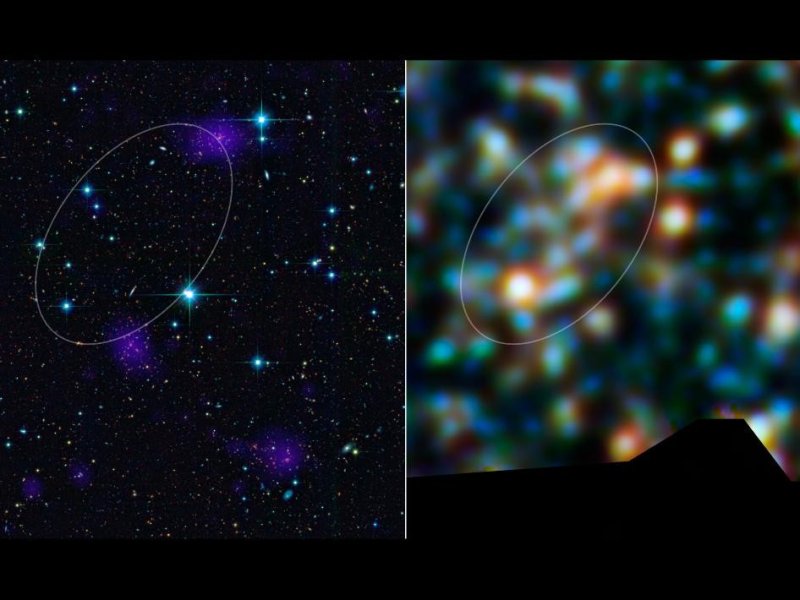The Herschel Space Observatory has discovered a giant, galaxy-packed filament ablaze with billions of new stars. Credit: ESA/NASA/JPL-Caltech/CXC/McGill Univ.
MONTREAL, May 18 (UPI) -- Astronomers using a European space observatory say they've discovered a giant, galaxy-packed cosmic filament ablaze with billions of new stars.
The filament imaged by the European Space Agency's Herschel Space Observatory connects two clusters of galaxies that, along with a third, will eventually come together as one of the largest galaxy superclusters in the universe, the astronomers said.
The glowing galactic filament offers a unique opportunity to explore how galaxies evolve and merge to form superclusters, they said.
"We are excited about this filament, because we think the intense star formation we see in its galaxies is related to the consolidation of the surrounding supercluster," astrophysicist Kristen Coppin at McGill University in Canada said.
The intergalactic filament, containing hundreds of galaxies, spans 8 million light-years and links two of the three clusters that make up a supercluster known as RCS2319, a distant object whose light has taken more than seven billion years to reach us.
"This luminous bridge of star formation gives us a snapshot of how the evolution of cosmic structure on very large scales affects the evolution of the individual galaxies trapped within it," study co-author Jim Geach said in a McGill release.
Galaxies in the filament are cranking out the equivalent of about 1,000 solar masses (the mass of our sun) of new stars per year, astronomers said, whereas our Milky Way galaxy is producing about one solar mass-worth of new stars per year.















